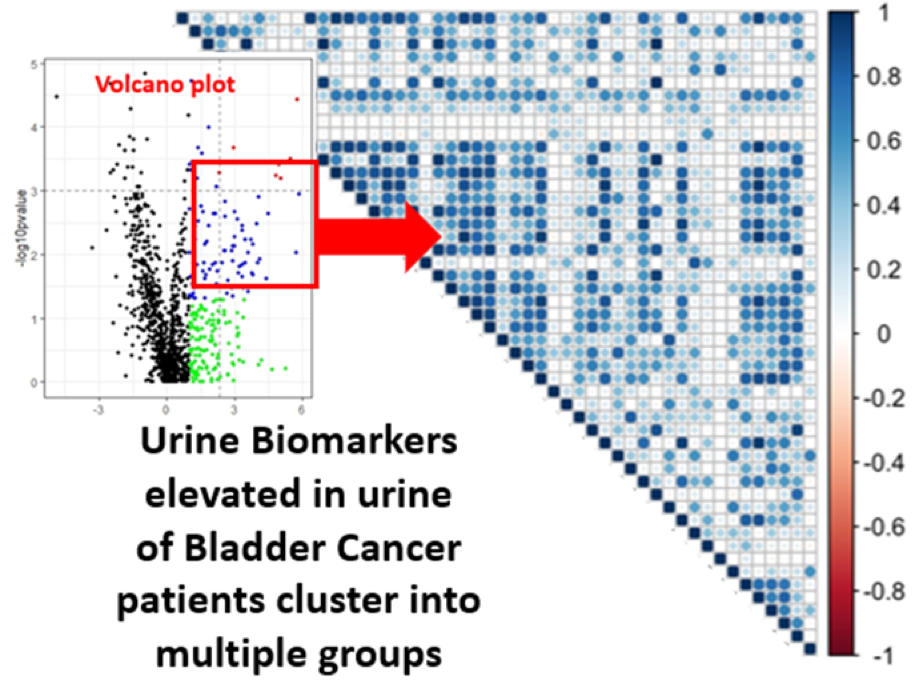
Non-invasive Diagnosis of Bladder Cancer: Novel urine protein biomarkers uncovered using of an aptamer-based screen
Lead: Kamala Vanarsa
Team Members: Shereen Enan
Collaborator: Dr. Lotan
Project Summary:
Bladder cancer (BC) is relatively common among men and women globally. Current approaches used for diagnosis include cystoscopy and biopsy. The need for non-invasive methods for early detection and monitoring of bladder cancer has received increasing attention. In the current study, BC patient urine samples were screened using aptamer based screening of 1300 proteins to identify potential urine biomarkers of bladder cancer. From our initial analysis, we identified 93 top performing proteins (BC vs UC; p-value <0.05, FC>2). Further analysis based on correlation profiles identified the 50 top performing proteins, as shown in the correlation plot. ELISA validation of these novel urine biomarkers is in progress.
What is already known in the field?
- Expression and association of a couple of urine cytokines such as IL-8, and Immunoglobulins with BC have been reported in the literature.
- Aptamer-based screens have been useful in uncovering disease biomarkers in other diseases.
What is new?
- The current study represents the first use of a comprehensive aptamer-based screen of urine samples from BC patients.
- This study has uncovered a couple of novel urine protein biomarker molecules that have never been reported in BC patients before.
Why is this important?
- A couple of the identified urine proteins out-performed current biomarkers used in clinical practice.
- Noninvasive detection of bladder cancer with improved accuracy can significantly improve long-term outcome in this disease.
- Urine is easy to obtain and urine biomarkers can be serially tracked, even by the patient from home, using a POC assay format.
Ongoing/future steps:
- Expand validation to larger patient cohorts of multiple ethnicities
- Examine expression of selected proteins in bladder cancer tissue
- Expand the proteomic screen to cover an even larger fraction of the human proteome